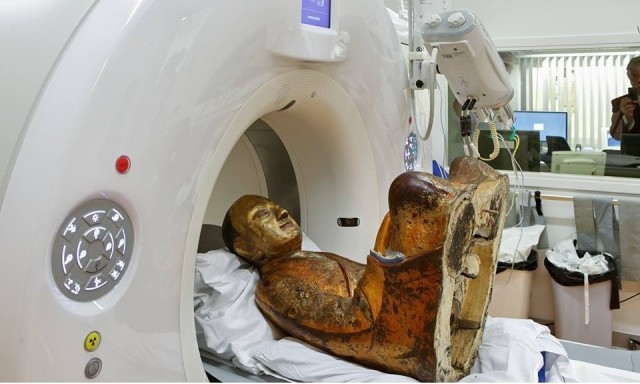The private Dutch collector who owns the 1,000-year-old Buddha statue with the remains of a mummified monk inside recently said that he is willing to return the relic to China.
Speaking to the New York Times via the social networking site LinkedIn, owner Oscar van Overeem, an architect, said he bought the buddha from a collector in Amsterdam via Hong Kong in 1996.
Van Overeem told the New York Times that he firmly does not believe the statue is the Zhanggong Patriarch, however he said he had reached a tentative agreement to donate the mummy to a “major Buddhist temple” near Yangchun, in southeast China’s Fujian province.
An unidentified foundation will offer van Overeem some compensation for what he has invested in the statue and in researching its history, van Oreem told the New York Times.
Villagers in Yangchun, Fujian believe that the buddha statue is the same one that was stolen from their temple 20 years ago, and is the personification of the Patriarch Zhanggong, who practiced self-mummification in the village during the Song Dynasty (960-1279).
Patriarch Zhanggong was a monk named Zhang Qisan who was known as a benevolent healer. He was worshiped as an ancestor by villagers in Yangchun village.
In ancient China, monks who made great achievements usually practiced self-mummification when they felt they are about to die. They stopped eating and drinking to deplete their organs in the period until death. After death, monks would be buried sitting in the lotus position in a clay vessel and the preserved body would bedecorated with paint and adorned with gold.
Last December, researchers at the Meander Medical Center in Amersfoort, Netherlands discovered the mummified remains of a monk inside the statue.
When villagers learned the news, many wrote letters to the Dutch museum and collector demanding the statue’s return.
Story compiled with information from CCTV America, the New York Times, and ChinaCulture.org
 CGTN America
CGTN America PHOTO: Jan van Esch / Meander Medisch Centrum
PHOTO: Jan van Esch / Meander Medisch Centrum
